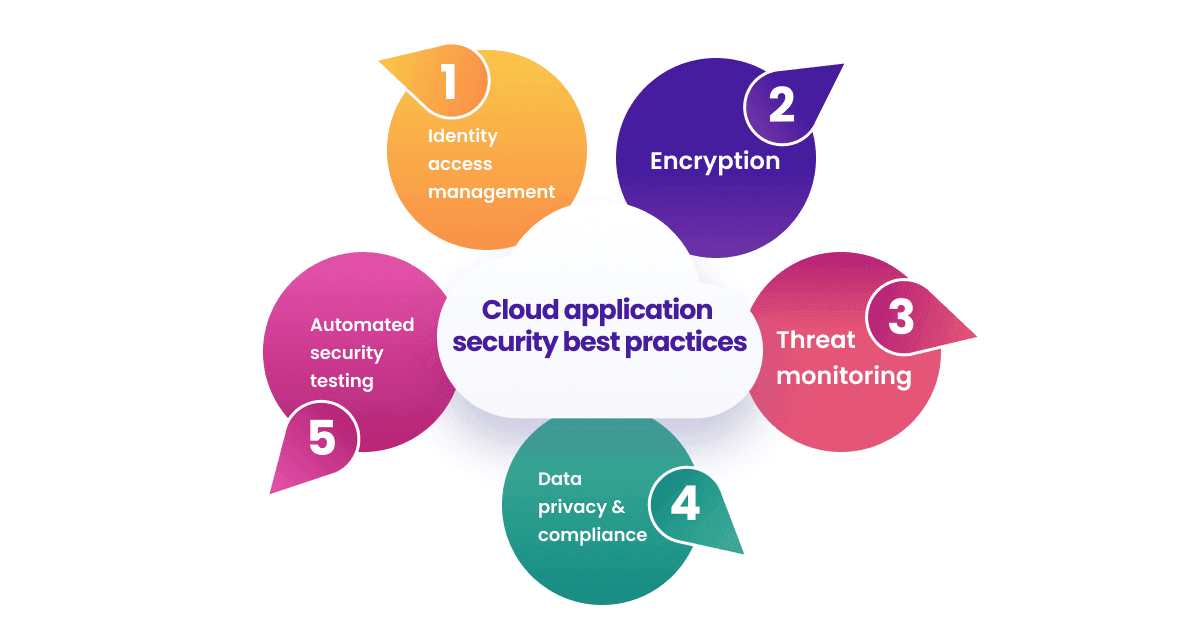Want to try it for yourself?
5 cloud application security best practices
Policies, tools and processes used to secure cloud native applications
What is cloud application security?
Cloud application security is defined as a set of policies, governance, tools and processes used to govern and secure the information exchanged within collaborative cloud environments and applications deployed to the cloud.
Who owns cloud application security?
As cloud native application development grows in popularity, it’s becoming more important for security, development, and operations teams to share responsibility for cloud application security. This evolving approach to application security, where developers are taking on additional AppSec responsibility, is called DevSecOps. Even with DevSecOps adoption growing, less than 10% of security professionals believed developers were responsible for the security of cloud native environments and applications, so ownership over cloud application security is likely to evolve over the coming years.
What are cloud application security issues?
Cloud application security issues are cyber threats that a cloud-based application is exposed to. These threats can include:
Unauthorized access to application functionality or data
Exposed application services due to misconfigurations
Hijacking of user accounts because of poor encryption and identity management
Data leakage from insecure APIs or other infrastructure endpoints
Distributed denial of service (DDos) attacks related to poorly managed resources
Cloud application best practices for effective security
Cloud application security requires a comprehensive approach to secure not only the application itself, but the infrastructure that it runs on as well.
Here are 5 cloud application best practices for implementing effective security measures:

1. Identity access management
Application security doesn’t exist in a silo, so it’s important to integrate secure measures like identity access management (IAM) with broader enterprise security processes. IAM ensures every user is authenticated and can only access authorized data and application functionality. A holistic approach to IAM can protect cloud applications and improve the overall security posture of an organization.
2. Encryption
Implementing encryption in the right areas optimizes application performance while protecting sensitive data. In general, the three types of data encryption to consider are encryption in transit, encryption at rest, and encryption in use.
Encryption in transit protects data as it’s transmitted between cloud systems or to end-users. This includes encrypting communication between two services, whether they’re internal or external, so that data cannot be intercepted by unauthorized third parties.
Encryption at rest ensures data cannot be read by unauthorized users while it is stored in the cloud. This can include multiple layers of encryption at the hardware, file, and database levels to fully protect sensitive application data from data breaches.
Encryption in use is aimed at protecting data that is currently being processed, which is often the most vulnerable data state. Keeping data in use safe involves limiting access beforehand using IAM, role-based access control, digital rights protection, and more.
Leveraging encryption for data in each of these stages can reduce the risk of cloud applications leaking sensitive data. This is crucial for achieving a high level of security and privacy that protects organizations from intellectual property theft, reputational damage, and loss of revenue.
3. Threat monitoring
After applications are deployed to the cloud, it’s crucial to continuously monitor for cyber threats in real-time. Since the application security threat landscape is constantly evolving, leveraging threat intelligence data is crucial for staying ahead of malicious actors. This enables development teams to find and remediate cloud application security threats before they impact end-users.
4. Data privacy & compliance
Along with application security, data privacy, and compliance are crucial for protecting end-users of cloud native applications. For example, compliance with GDPR requires careful vetting of open source components, which are frequently used to speed up cloud native application development. In addition, data encryption, access controls, and other cloud security controls can also help protect the privacy of application users.
5. Automated security testing
A key part of DevSecOps is integrating automated security testing directly into the development process. By automatically scanning for vulnerabilities throughout the continuous integration and continuous delivery (CI/CD) process, development teams can ensure every new software build is secure before deploying to the cloud. This includes not only the code and open source libraries that applications rely on, but the container images and infrastructure configurations they’re using for cloud deployments.
In addition, implementing developer-friendly security scanning tooling with existing developer workflows can enable the “shifting left” of cloud application security. Shifting left testing can dramatically reduce the cost of vulnerability detection and remediation, while also ensuring developers can continue pushing code quickly.
Remaining secure at speed and scale
Many organizations are adopting cloud native application development to build modern software faster than ever before, but the nature of applications and the infrastructure they’re deployed on has fundamentally changed. That’s why it’s critical that today’s development and security teams understand these best practices for keeping cloud native applications secure.
Learn More
For more resources on Cloud Application Security, check out these articles:
IaC security designed for devs
Snyk secures your infrastructure as code from SDLC to runtime in the cloud with a unified policy as code engine so every team can develop, deploy, and operate safely.
Up Next
Measuring your Cloud Native Application Security Program
Learn more about new approach to collecting cloud native application security metrics as well as interpreting them in a more effective and actionable way.
Keep reading



















